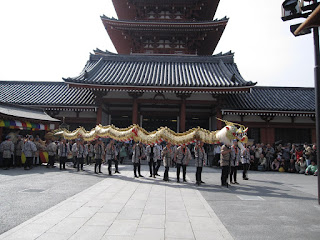"...a photo is something that you develop and print yourself, in the dark, and that remains in the dark until you decide to show it."This week's post focuses on one of Japan's very own professional photographers, Hiroshi Hamaya (1915-1999). Hamaya, a native of Tokyo, began his career focusing on photographing daily life in Japan. At the age of 15, Hamaya taught himself how to take pictures with a focus on ordinary people and their everyday lives. As Hamaya moved on to become a freelance photographer working with Oriental Photographic Industries and later for other employers, he experimented with different themes and subjects in his photographs. Some of the themes that Hamaya experimented with were ancient rituals and farming practices. Hamaya became the first Asian photographer of Magnum Photos, a photographic cooperative owned by its own photographer-members. He gained recognition after World War II for his work during the war. Among his numerous accomplishments, Hamaya was also awarded the Hasselblad Foundation Award (1988) by the Queen of Sweden and the Honorary Fellowship of the Royal Photographic Society (1997).

(Hiroshi Hamaya. Geishas, Ginza, Tokyo, 1937. Borrowed from Artnet,
http://www.artnet.com/artwork/425907579/376/hiroshi-hamaya-geishas-ginza-tokyo.html.)
For his work throughout his career, Hamaya experimented with different types of subjects. He concentrated on capturing ordinary people on film during the early stage of his career, choosing to focus on people and their interaction with the environment surrounding them. Hamaya later traveled to other regions of the world, specifically Manchuria and other parts of mainland China, to capture images of war. For this post we will focus on his work in Japan. For a part of his career, Hamaya chose to dedicate his work to presenting the daily lives of ordinary Japanese people in photographs. Even before this, Hamaya had focused on photographing the people of the city that he grew up in, Tokyo. Many of his early photographs consisted on images of geishas, cafes, and street life in the vibrant city. It seems that he balanced his work in presenting two social extremes, one of the vibrant and upbeat city that he was part of and the other of the quiet sleepy towns in rural Japan. His work covered different lifestyles and aspects of Japan, but was not diverse enough to encompass the different aspects of Japanesse culture . His narrow focus, although fell short in presenting various aspects of Japanese culture, did present accurate pieces of information of a specific event existing in a certain time at a certain place in Japan. His work in the city presented a description of the traditional practice of geisha that has continued to exist in the present world. His photographs are not an exaggeration of everyday lives, but a true snapshot of what is happening in everyday Japan. Overall, Hamaya's work come as close as you can possibly get to presenting an accurate description of Japanese culture. By providing images of the two ends of the social spectrum in Japanese society, Hamaya leaves the audience wondering about the in-between groups of people, whose images are not captured by the photographer.

(Hiroshi Hamaya. Toyama woman planting rice, 1955. Borrowed from Steven Kasher Gallery
http://www.stevenkasher.com/html/artistresults.asp?artist=197)
Considering the photographer's choice of subjects and themes, I believe Hamaya had attempted to capture images of his subjects interacting with their environment in their natural form. Simple pictures, such as a still image of two geishas walking on the street staring at the camera or a cutoff snapshot of a woman whose pants are covered with mud, don't focus much on who the subject in the picture is as individual, but rather these images provide context as to the cultural interaction or lifestyle that's common of a people of a region. I believe that Hamaya's photographs seek to convey to the viewer a sweeping view of a culture that isn't entirely depicted in every captured images of the photographer's.
"A photographer's role is to show what words and other forms of expression can't convey."Other works include:
Yukiguni (Snow Country, 1956)
Ura Nihon (Japan's Back Coast, 1957)
All information and images were found at the following websites:
Michael Hoppen GalleryFrank Horvat PhotographyPhotoGuide JapanStudio EquisLens Culture- Photography and Shared Territories (blog)
To view photos by Hamaya and other members of the cooperative go to
Magnum Photos.







